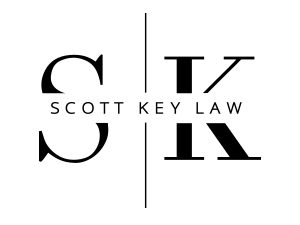Use the Tomato to Write More Words
The Pomodoro Technique has helped me to write briefs, prepare for trials, and stop procrastinating. It has also assisted me in getting more done over less time than it would ordinarily take. There’s a whole set of books and culture around it, but the method is easy to explain. Set a timer for twenty-five minutes. Work without allowing yourself any kind of interruption for that period of time. At the end of that block of time, you have earned a pomodoro (a tangible sign that you’ve completed a block of work). Take a five-minute break. Then reset the clock for another twenty-five minutes. Once you have four pomodoros, take a twenty-five minute break restart the entire process. On days when I don’t have court, my goal is to do eight to ten pomodoros. By the way, the technique was named by Francesco Cirillo, the guy who came up with I’d. Pomodoro is Italian for tomato, and apparently the timer he used was a kitchen timer shaped like a tomato. Hence, the Pomodoro technique. Here’s how the technique has helped.
* It forces you to go distraction-free for a period of time. A feature of The Pomodoro Technique is that you don’t get the pomodoro if you are interrupted by anything other than the task at hand during that period of time. You’re literally to reset the clock to twenty-five minutes. When you’re in a pomodoro, you’re ruthless and all out. Twenty-five distraction-free minutes is better than an hour of sort of doing work, while you check email, respond to texts, and take a peek at twitter.
* The work compounds over time. The gathering of pomodoros allows you build momentum. By the time you stand up for your long break, you have done 100 minutes of work. And while your brain sees the four tomatoes you’ve earned, your brain also has accumulated the product of 100 hours of work. Another session of four, it’s eight pomodoros and 200 hours of work. Here is a sad commentary on what it was like for me before I employed this method. I would spend an entire day and and have little to show for my efforts aside from a bunch of outgoing email. Just doing four pomodoros was a huge increase in my daily output.
* A side benefit is that the time is tracked. If you keep a written log of your results, you can look back over time and see exactly what you worked on. Even if you write down what you did in a line or two, you can use this technique to built a work journal.
* It gets you working. It can be depressing and overwhelming to imagine the prospect of writing an entire brief, a paper, or preparing some big project. But you can easily wrap your head around the idea of doing twenty five minutes of work. There’s a sort of working inertia here. Your body at rest wants to stay at rest. And you’ll find, at the end of 25 minutes, if you’re on a roll, that a body in motion wants to stay in motion. So, you’ll sometimes not want to stop when the bell rings twenty-five minutes. And it’s easy to jump-start after a short break.
* You trick the brain. The brain can’t wrap itself around the idea of some big nebulous thing like “write the report,” or “get some work done.” Your brain can also have trouble with things like “complete a paragraph.” But “grab a tomato” is simple and tangible for the brain to see and accomplish
* You’re moving from goal-oriented thinking to systems thinking. Yes, you may be working toward the completion of a particular project. Yes, you may have a particular outcome in mind when you sit down to write. But the Pomodoro technique is a system. If you tell yourself that you will show up each day and complete 250 minutes (or whatever number you choose) of work, then you have committed to a particular set of behaviors — not to the achievement of a particular goal. Goals aren’t particularly helpful. At the beginning of every football season, every coach has the goal of winning a championship. But not every coach has a winning system. Many people set goals on December 31 for the new year. But almost nobody installs a system. The Pomodoro technique or any other process you might put into place provides a way to accomplish things, no matter what those things may be. It professionalizes a way of work. And while it’s not goal-oriented, goals have a prominent place. And you will find that somehow goals are achieved better when you do more than merely have them.
To anticipate a question, there is nothing magical about twenty-five minutes. You can experiment with the format all you like. You can completely overhaul it if you like. However, for me, this process has been a tangible and effective way to avoid procrastination, block out distractions, and move the ball down the field every single day that I do it.

 It’s not an easy gig to be a ref. And it gets harder every day. That is the thesis of
It’s not an easy gig to be a ref. And it gets harder every day. That is the thesis of